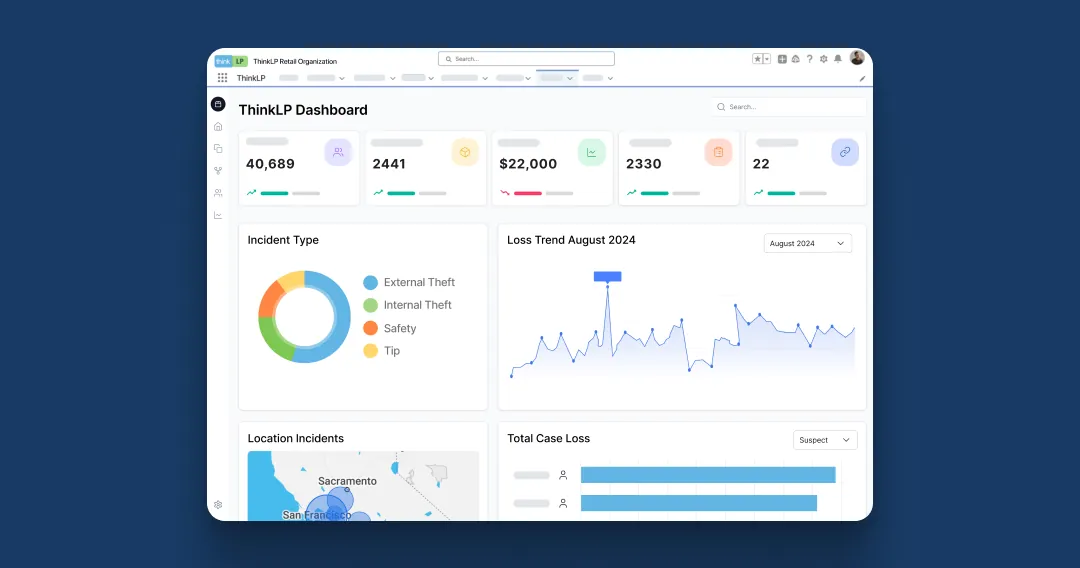Key Takeaways
-
- Flexible LP software allows you to adapt your loss prevention strategies to fit the unique needs of your business.
- Customization, integration, and scalability are essential features of truly flexible software.
- A flexible system empowers LP teams to proactively identify and respond to emerging threats.
- Investing in flexible LP software is an investment in the long-term resilience and effectiveness of your loss prevention program.
What Makes LP Software “Flexible”?
Flexibility in LP software means it can adapt to the ever-changing needs of your organization. It’s not just about having a lot of features, it’s about having the right features, configured in the right way. Key characteristics of flexible LP software include:
-
- Customization: The ability to tailor the software to your specific workflows, data requirements, and reporting needs.
- Integration: The ability to seamlessly connect with your existing security systems, POS systems, and other relevant data sources.
- Scalability: The ability to easily scale the software to accommodate your growing business and evolving needs.
- Configurability: The freedom to configure the software’s settings, rules, and alerts to match your unique risk profile.
The Importance of a Flexible LP software
Loss prevention strategies can’t be generic; they must address the unique needs of each business. A large retail chain faces different challenges than a small independent store, and the priorities of a grocery store differ from those of a clothing boutique. Flexible LP software is therefore essential, enabling businesses to focus on their specific risks and vulnerabilities. It allows organizations to tailor their strategies to address particular threats, such as organized retail crime or internal theft, while also optimizing workflows to improve team efficiency.
Flexible software offers deeper insights into loss prevention data, making it easier to identify patterns and emerging trends. This capability helps businesses stay ahead of potential issues and adapt their strategies proactively. Users can fine-tune alerts and rules, reducing false positives and ensuring teams focus on genuine threats without unnecessary distractions. The adaptability of flexible LP software ensures that loss prevention efforts remain both effective and relevant to the unique needs of each business, ultimately leading to more robust protection of assets and improved operational efficiency.
What Features Should I Look For in a Flexible LP Software?
When evaluating flexible LP software, prioritize these key features:
-
- Customizable Reporting: Generate tailored insights by tracking the metrics most relevant to your operations.
- Configurable Alerts: Ensure timely and accurate responses to potential risks by flagging specific events or patterns.
- Role-Based Access Control: Enhance security and compliance by limiting user access to appropriate features and data.
- Open API: Integrate seamlessly with existing systems like POS or surveillance tools for a unified approach.
- Mobile Accessibility: Enable teams to report incidents and access critical information from any location for enhanced flexibility.
How Does It Work In Practice?
To illustrate the practical application of flexible LP software, consider a regional grocery chain facing an increase in organized retail crime (ORC) targeting high-value items such as alcohol and electronics. In this scenario, the software’s flexibility allows for targeted strategies.
The system can be configured to trigger alerts when multiple high-value items are scanned in a single transaction, particularly during peak hours.
The software can also automatically flag and link video footage to suspicious transactions, facilitating efficient review processes. Furthermore, detailed reports can be generated to track ORC incidents by location, time of day, and targeted items, enabling data-driven decision-making.
The system can streamline the process of exporting relevant data and evidence for sharing with law enforcement agencies, enhancing cooperative efforts to combat ORC. This tailored approach allows the grocery chain to respond effectively to its specific ORC challenges, demonstrating the practical value of flexible LP software in real-world scenarios.

How Different Departments Can Leverage a Flexible LP Software
Flexible LP software offers benefits across various departments within an organization, extending its value beyond traditional loss prevention roles.
The Loss Prevention department can use the software to proactively identify and mitigate risks, track incidents, and manage investigations more efficiently.
Operations teams can leverage the system to monitor operational compliance, identify process inefficiencies, and improve overall efficiency throughout the organization.
Human Resources departments find value in investigating employee theft and misconduct, managing background checks, and ensuring compliance with labor laws. Finance teams can utilize the software to identify and prevent fraud, track financial losses, and ultimately improve profitability.
ThinkLP recognizes the diverse needs of businesses and has designed its Loss & Safety Intelligence Platform with flexibility at its core. The platform can be tailored to specific workflows, integrated with existing systems, and scaled as businesses grow. This adaptability ensures that organizations aren’t just purchasing software, but investing in a solution that can evolve with their changing needs. By providing a versatile tool that serves multiple departments, ThinkLP’s flexible LP software becomes an integral part of an organization’s overall risk management and operational improvement strategy.
Flexible LP Software Implementation Process
Implementing flexible LP software is a strategic investment that involves a thoughtful, step-by-step approach to ensure success:
-
- Assess Your Needs: Begin by identifying your specific loss prevention challenges and determining the features and capabilities required to address them effectively.
- Research Vendors: Explore vendors that offer customizable and flexible solutions, ensuring their software aligns with your business requirements.
- Request a Demo: Schedule a demonstration to see the software in action, evaluate its functionality, and determine how it fits into your existing workflows.
- Start Small: Launch a pilot project to test the software in a controlled environment, allowing you to refine processes before rolling it out organization-wide.
Following these steps ensures a smooth implementation process and allows you to create a tailored loss prevention strategy. Flexible LP software helps reduce losses, improve operational efficiency, and safeguard your bottom line.
Explore ThinkLP’s Blog
Now that you know more about flexible LP software, you can find additional insights on loss prevention and safety intelligence on ThinkLP’s blog. The blog features articles, case studies, and industry insights that provide practical tips and strategies for improving your loss prevention efforts.
Request a Demo
If you are interested in how ThinkLP’s software can support your loss prevention initiatives, we invite you to request a demo. Their Loss & Safety Intelligence Platform is designed to integrate with your existing operations, helping you reduce risks and improve efficiency. Reach out today to learn how ThinkLP can assist your organization in optimizing its loss prevention strategy.


